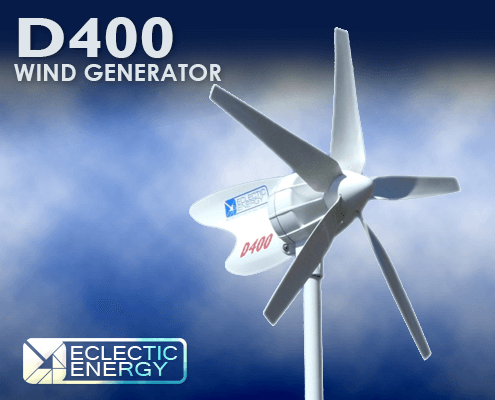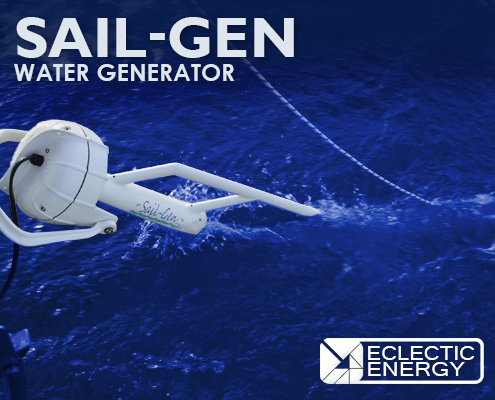Noise
Wind turbines can produce airborne noise which emanates from the air blades and also mechanically transmitted noise, I.e. vibration. Excessive airborne noise is unpleasant for the crew on deck and makes you unpopular with the neighbours. Mechanically transmitted noise is experienced as “thrumming” throughout the yacht’s accommodation and often results on the turbine being switched off. If the turbine you choose proves to be too noisy to operate fully, then most of its utility is lost.
Efficiency
Having intercepted an airstream, the job of the turbine blades and alternator is to capture and convert the available kinetic energy to electrical energy as efficiently as possible. This level of efficiency is expressed as he power co-efficient (CP) of a turbine. The D400 is a particularly efficient machine which is why it consistently outperforms competitor turbines, even where they are fitted with larger air rotors.
Why are some wind turbines noisy?
Airborne noise increases with blade speed. The technical term is “tip speed ratio” (TSR). The TSR describes the speed of the air blade tip in relation to the true wind speed. Machines designed with large, slow speed alternators, such as the D400, typically feature five or six broad air blades/ These will operate at a low TSR (4-6) and the result is quiet operation. Turbines designed with small, lightweight alternators feature two or three slender air blades and will operate at a high TSR, typically 10-16. As the blade tips are travelling so fast (over 400 mph in a force 7), the resulting noise can be heard hundreds of yards away. Scimitar-shaped blades, surface texturing and the addition of turbulators have all been used to moderate airborne noise but ultimately blade speed is the critical factor.
Where does vibration come from?
Vibration can be caused by unbalanced or damaged air blades, loose mountings etc. However, the chief cause of mechanically transmitted noise lies in the design of the alternator itself. Light, high speed machines use alternators of a conventional radial configuration. They are built down to a price using a minimum of copper and magnetic material. The copper windings are placed on steel punchings which form the alternator’s magnetic circuit. When these punchings align with a magnet pole, a “hardspot” is felt. This phenomenon is called “cogging”. Cogging inhibits an early start-up in light winds and subsequently results in vibration down the mount tower and into the yacht’s accommodation. The D400 uses an axial field, ironless alternator. This rotates absolutely smoothly with no cogging, so there is no vibration to transmit. The D400 also uses very large, permanent magnets and heave copper windings. This enables the alternator to generate at low RPM, and the air blades to operate at a low TSR of 3.9, which keeps the airborne noise emission below 40 decibels.
Turbine weight
Many yacht owners are understandable concerned about the weight of equipment they install, and its possible effect on the vessel’s stability. However, the weight of the unit is not the only stress that a wind turbine imposes on the mount tower and yacht’s structure. The wind loading on the rotor disc can greatly exceed the turbine’s weight, and wind loading is determined by rotor area. This means that the wind loading on a lightweight wind turbine of 1.2 metre rotor diameter will always exceed the wind loading on a D400 with its 1.1 metre rotor. In extreme conditions, that difference in loading could mean the equivalent of an extra 25kg of rotor thrust from the light turbine compared to the D400.







